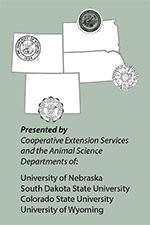Benchmark for Improvement
National Beef Quality Audit tracks continuous improvement within industry.
CHEYENNE, Wyo. (Nov. 28, 2017) — What if you were losing $458 per head due to quality defects on a beef carcass? That was a real scenario for the beef industry, according to data gathered in the early 1990s. It was also the impetus for initiating the National Beef Quality Audit (NBQA), which began in 1991 and has been conducted every five years since.
The most recent audit was conducted in 2016 with data collected on steers and heifers, as well as market (cull) cows and bulls. Oklahoma State University Animal Scientist Deb VanOverbeke, who was involved in collecting and analyzing data for the 2016 NBQA, was on hand at the 2017 Range Beef Cow Symposium in Cheyenne, Wyo., Nov. 28-30 to share the results.
“We have 25 years of history to tell us where we’ve been and how far we’ve come,” she said of the audit’s importance to the industry.
She explained that the audit process includes three phases: face-to-face interviews with industry stakeholders, in-plant data collection, and strategy workshops to prioritize quality improvement areas to focus on for the next five years. In total, the NBQA was able to capture data and information representing 92% of all U.S. beef harvested, 55% of U.S. retail beef markets, and about 25% of foodservice sectors.
Full findings of the audit results are available at https://www.bqa.org/national-beef-quality-audit. Some of the key takeaways revealed by the NBQA include:
- Use of branded-beef programs has increased.
- Consistency in size [of boxed beef] is important.
- Food safety is of top importance.
- Eating satisfaction is equated to customer satisfaction, with tenderness and flavor being drivers.
- Traceability has different meanings across different sectors. Some equate it to food safety, some to marketing and others to animal health.
VanOverbeke noted that the NBQA revealed bruise severity and injection-site lesions have seen huge decreases in the past 25 years, with improvements made even in the past five years. The “lost opportunities” on a steer or heifer carcass today is estimated to be about $49 per head, with most of that due to losses from quality grade, yield grade or hot carcass weight.
Looking to the next five years and beyond, VanOverbeke noted that implementation of Beef Quality Assurance (BQA) practices must continue to be championed and adopted within the beef industry. Additionally, better communication of BQA principles to packers, retailers, foodservice and further-processing entities could improve marketing and public perceptions, she suggested.
In closing, VanOverbeke challenged the audience to find ways to continue to improve.
“Doing one thing 1% better does make a huge improvement over time,” she noted. She pointed to the dramatic decrease in injection-site lesions during the past two decades as one success story from striving to improve.
She asked the audience to consider the scenario of spending $1 to prevent a quality defect vs. spending $10 to fix a defect at manufacturing vs. spending $1 to fix a defect for a customer.
Thus, VanOverbeke encouraged each sector in the beef industry to ask themselves: “Is there one thing you could do differently to create a higher-value product for the next guy down the road — and ultimately [for] the consumer?”
Read more details about the 2016 NBQA findings in these Angus Journal articles:
- “State of the Beef Industry,” by Kasey Brown, October 2017
- “Room to Improve,” by Laura Conaway, November 2017
- “Cull Cattle Report Card,” by Kindra Gordon, November 2017
Editor’s Note: This summary was written under contract or by staff of the Angus Journal®, which retains the copyright. To request to reprint this article, contact Shauna Rose Hermel, editor, at 816-383-5270. PowerPoints are posted with permission of the presenter and may not be reproduced in whole or in part without the express permission of the presenter. Angus Journal claims copyright to this website as presented. We welcome educational venues and cattlemen to link to this site as a service to their audience.
The Angus Journal's coverage of the event is made possible in collaboration with the event committee. For questions about this site, or to notify us of broken links, click here. Look for additional coverage in the Angus Journal, the Angus Beef Bulletin, the Angus Journal Daily, the Angus Beef Bulletin EXTRA and The Angus Report.


